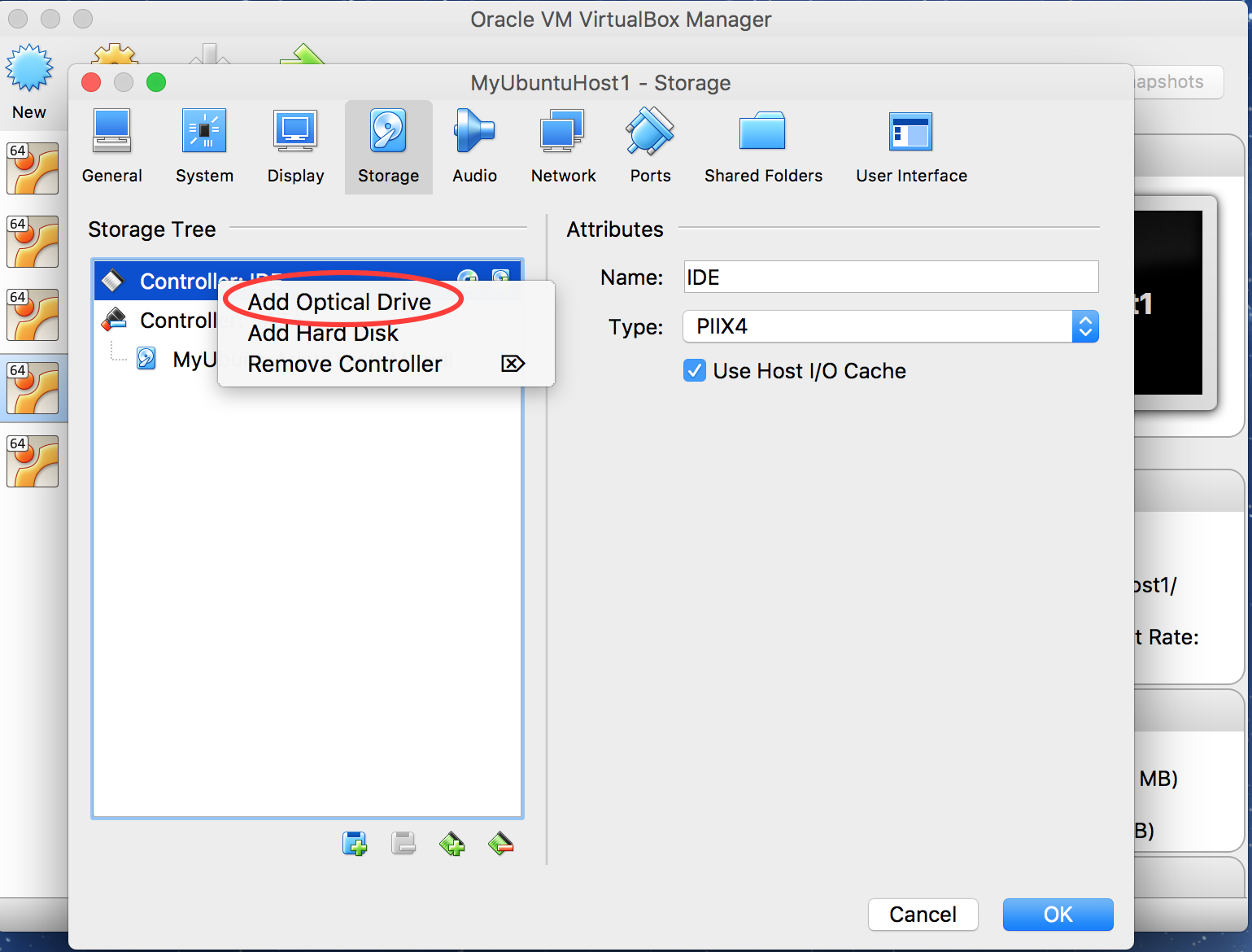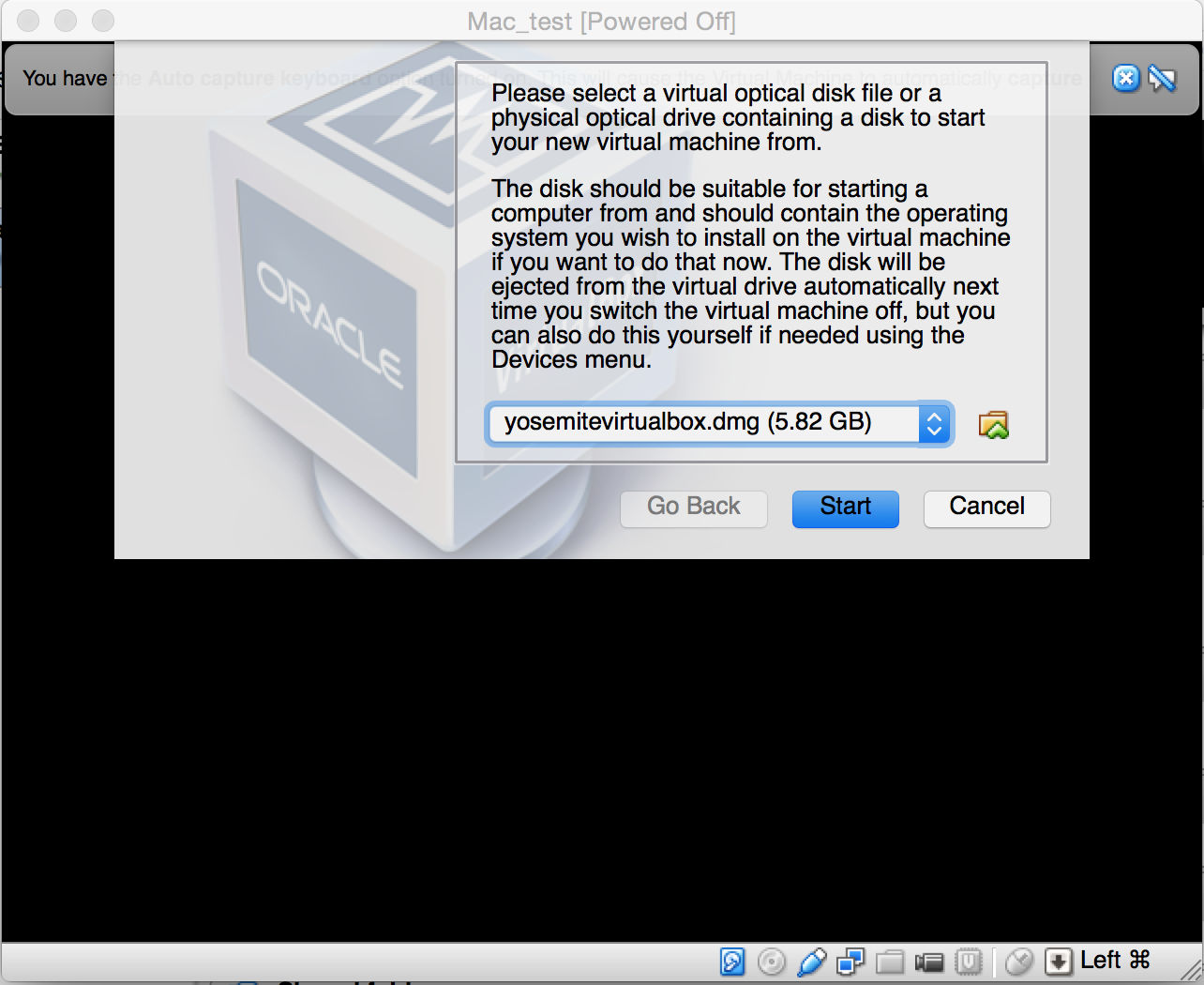
- #Optical drive for mac virtualbox mac os#
- #Optical drive for mac virtualbox install#
- #Optical drive for mac virtualbox drivers#
- #Optical drive for mac virtualbox update#
- #Optical drive for mac virtualbox windows 10#
Due to more stringent security in recent versions of macOS, you may have to explicitly allow VirtualBox to run on your system after you’ve installed it. I used the November 2019 Update, as other versions didn’t work for me: just grab the latest at the time you’re reading the article. A USB key drive with at least 4GB of spaceĪlright, let’s get to work! Create a bootable Windows driveįirst, download a Window 10 ISO from Microsoft.
#Optical drive for mac virtualbox install#
An external drive, either HDD or SSD, with enough space to install Windows plus enough space for anything you want to use it for. I won’t be able to help people with individual problems, but I hope this article (and the internet) will be enough to figure things out eventually.² #Optical drive for mac virtualbox drivers#
Install the required drivers for Windows to interface with the MacBook’s hardwareīefore we venture on, here’s a caveat: this is a fiddly process and there are countless reasons why it may not work for your setup specifically. Conclude the installation by booting the MacBook from the drive itself. Use VirtualBox to begin installing Windows on the external drive, to the point it becomes bootable. The ultimate goal is to have a bootable installation of Windows on an external drive and being able to run it on a MacBook. In the interest of clarity, I’m going to consolidate those two articles into one and add all my personal experiences about the process: this will hopefully give everyone an easier blueprint to follow, at least until the next round of changes in hardware and software 😄 What we are going to do That said, time runs fast in IT and they’re both not quite accurate anymore¹. #Optical drive for mac virtualbox update#
There are great online guides to the process: this 2017 article by Tom Nelson and a 2018 update by Sven Kirsimäe helped me a lot. The cheapest and more self-contained solution, in my opinion, is to be able to boot Windows from an external drive (HDD or SSD). That said, I find it useful to be able to run Windows sometimes, as long as it doesn’t mess up the macOS running on my MacBook.
Start the Oracle VM VirtualBox Guest Additions wizard, select shared folder in Browse for Folder window.Using macOS is the best fit for me, both professionally and in my personal life. 
Select Next to run VBoxWindowsAdditions exe.Prompt appears – CD Drive D: VirtualBox Guest Additions, click on message.

#Optical drive for mac virtualbox windows 10#
From the Virtual Box Menu Bar (not Windows 10 menu) select DEVICES – Insert Guest Additions CD Image…. Open Virtual Box, run Windows 10, log into your account. INSTALLING VIRTUALBOX GUEST ADDITIONS PACKAGE #Optical drive for mac virtualbox mac os#
When you want to run Windows again in Mac OS X, just launch VirtualBox again, select your Windows 10 virtual machine, and click the “Start” button to boot Windows in the app.
When you’re finished, quit VirtualBox like any other application and Windows 10 will shut down. When setup is finished, Windows 10 will be running in VirtualBox. Go through the standard Windows 10 installation experience, this can take a little while but eventually you’ll create a user account, select a user name, and do some basic Windows configuration. In a moment or two you’ll be in the Windows 10 installer, select your language and click “Next.”. Since there is no drive or OS installed yet, you will be asked to choose a virtual optical disk, click on the Folder icon and choose the Windows 10 ISO, then click “Start.”. 
Back at the primary VirtualBox screen, choose “Start” to boot the new Windows 10 volume.

Select to create a new virtual hard drive, then choose Continue again. Name the new virtual machine “Windows 10 VM” (or something equally obvious), select “Microsoft Windows” as the type and choose “Windows 10” as the version, then choose Continue. Open VirtualBox and click on the “New” button to build a new virtual machine. Open the disk image dmg file and double-click on the uninstall icon shown. Save the DMG file, which is needed to uninstall Virtual Box. After installation, you can find an Oracle VM VirtualBox icon in the “Applications” folder in the Finder. This will start the installer, which enables you to select where to install Oracle VM VirtualBox. A window opens, prompting you to double-click on the VirtualBox.pkg installer file dis-played in that window. Double-click on the DMG file, to mount the contents. Download VirtualBox installation DMG from, select OS X hosts.








 0 kommentar(er)
0 kommentar(er)
